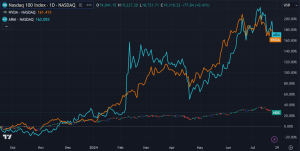Twenty years ago:
As soon as the first plane hit the first tower, the doctors, nurses and med techs at St. Vincent’s Hospital sprang into action, awaiting the desperate onslaught of critical patients who were sure to arrive soon.
St. Vincent’s was the closest level-one trauma center to the World Trade Center, and Dr. Richard Westfal could already hear the ambulances wailing down Seventh Avenue.
As associate director of the hospital’s emergency department and longtime director of its ambulance corps, Westfal knew the ambulances would be full in a matter of minutes. He was a beloved father figure to all those paramedics and EMTs.
But all he could do now was wait. And wait. And wait.
“For the first three hours, I’d say, we had a pretty regular trickle of patients,” he recalled. “But it wasn’t severely injured people. I remember them. It might be like an asthmatic who was covered in dust, who now had an asthmatic attack. Some rescue workers and people trying to help down there who were overwrought or overwhelmed. I remember a man who had known angina. He said, ‘I walked down 87 staircases. I was lucky to get out of there.’
“And then about noontime, it was like someone put a lock on the door of the emergency room,” the doctor said. “Patients stopped coming. Once those two buildings were down, there was no one else coming in. I remember thinking that’s an eerie sign.”
Medically speaking, there were two categories from the World Trade Center terrorist attack, which would take the lives of 2,819 people and fundamentally change how America looked at the world.
Said Westfal: “Either you were OK or you were dead.”
St. Vincent’s got an amazing outpouring of support that day. “So many nurses from the community, doctors rushing to the hospital to help,” he said. “At points, we were overwhelmed with too many volunteers. We had to get on security a little bit and say: ‘You gotta keep people out of here.’ You can’t take care of a patient when eight people are standing around the stretcher. We were grateful for all the help. But there was also a feeling of helplessness, and that was the feeling that lasted.”
When bad things happen on a large scale, nearby emergency rooms tend to get slammed. On Sept. 11, 2001, it was exactly the opposite. The St. Vincent’s ER never got busy. That’s how Westfal and his colleagues knew how unspeakably terrible this was.

On a fence next to St. Vincent’s Hospital, hundreds of ceramic plates paid homage to the victims of the 9/11 attack. The hospital, which closed in 2010, was the closest to the World Trade Center.
Getty Images
For more than a century and a half, St. Vincent’s Hospital was there for New York.
Founded in Greenwich Village 14 years before the Civil War, St. Vincent’s became a major teaching hospital and the city’s premiere Catholic health-care institution. The hospital’s first patients included victims of the cholera epidemic of 1849 and, soon enough, many of the neighborhood’s writers, artists and homeless people. In 1870, St. Vincent’s introduced its first horse-drawn ambulance. When the Titanic sunk In 1912, the stunned survivors were rushed to St. Vincent’s. In 1968, St. Vincent’s launched the nation’s first Mobile Coronary Care Unit. And when AIDS hit in the 1980s, devastating New York’s gay community, St. Vincent’s established the first AIDS ward on the East Coast and, for the next 10 years, led the treatment of that horrible scourge.
But at the turn of the 21st century, the American health-care industry was changing, almost as dramatically as the price of West Village real estate. St. Vincent’s closed on April 30, 2010, and was demolished by early 2013. Today, the hospital’s former campus is a luxury condominium development called Greenwich Lane. And Dr. Richard Westfal, now 73, practices internal medicine in New Canaan, Connecticut, closer to his home. Along with all the normal stuff, he’s treated more than 30 COVID-19 patients in the past year and a half.
Also see: With potential fines on the menu, restaurants grapple with New York City’s vaccination mandates
The inability to help more was traumatic for everyone around St. Vincent’s 20 years ago, Westfal said, including all the medics on duty that day. So was the fact that 10 New York ambulance crew members died in the towers’ collapse and the fact that their families did not qualify for the city’s police and firefighter benefit programs. Westfal teamed up with the Greater New York Hospital Association to raise money for their families, then pushed Mayor Rudolph Giuliani to make all 10 families eligible for the city benefits.
“The biggest thing I saw in the eyes of all the medics wasn’t that they were willing to go to Ground Zero the first time,” he said. “It was after they knew what they were going into, they went back again. That’s what I really admired.”
It’s strange, Westfal said, what still sticks in his head two decades later. He was standing outside the hospital’s emergency entrance with Giuliani, addressing the media.
“One of the reporters asked a pointed question,” the doctor recalled. “He said, ‘Hey, Westfal, come on. The buildings just went down. Are you expecting ANYBODY?’ The question was appropriate. It was asked properly. But I was thinking about all the families that were watching on TV, and I thought I had to deliver the news gradually. I had to bring it along slowly like we do in medicine when somebody has passed away suddenly. You don’t call the family and say, ‘Your husband just dropped dead.’ You say, ‘He was sick, and we gave him medicines, and we tried to work on him. And I’m sorry to tell you, but we did everything we could.’
With the reporters on the sidewalk and the mayor at his side, Westfal tried to break the news about the loss of life in the attacks as well as he knew how.
“The first thing I said was, ‘Well, you remember in Oklahoma City, when that building went down? They took people out five days later. They found a couple that were still alive.’ It was a terrible thing that happened at the World Trade Center. We all knew how bad it was. And all we could do was to try help people gradually.”
Ellis Henican is an author based in New York City and a former newspaper columnist.
This post was originally published on Market Watch






